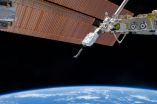SAN FRANCISCO, CA, March 04, 2014 (Press-News.org) John Wayne faced two memorable encounters with "Dirty Harry." Many Wayne fans know that turning down the title role in the film of that name would go down as his biggest lost opportunity of the 1970s. The film series would make Clint Eastwood a superstar and earn him a small fortune.
Wayne's lesser-known encounter with Harry came roughly 20 years earlier when he stood on the hallowed grounds of Snow Canyon Utah, filming his fated epic 'The Conqueror.' Many suggest this encounter would prove even more troubling than the loss of a movie role. Some say it may very well have cost him his life.
Thus begins the saga of Who Nuked The Duke?, a 295-page new book from Aplomb Publishing and San Francisco author John William Law, suggesting that this single event marked a turning point in the dramatic tale in the making of Wayne's 1954 epic The Conqueror.
Who Nuked the Duke? surmises that the atomic blast of Harry in 1953 would be a lighting rod - or ground zero - of the events that followed for those surrounding the film. The problematic blast would be known as "Dirty Harry" after detonating too close to ground and sucking up "dirty" debris into its massive mushroom cloud.
"The morning of May 19, 1953 started off a bit overcast, but overall an ordinary spring day for the residents of St. George, Utah," says Law. "But it was far from that. In fact, it would be a day that would mark a dramatic change for the community and anyone who might inhabit the local surroundings for the foreseeable future."
Law writes that even though the cast and crew of The Conqueror would not set foot in Utah for another year, the deadly fallout had already amassed in the area where the film would be shot and the intensity of the radioactive land spelled doom for not only the movie stars, but for the supporting cast, crew and local community that came out as film extras or to watch the stars at work. "The movie was filmed largely in an area called Snow Canyon, a place that acted, in many ways, like a reservoir for nuclear fallout," says Law. "Because the government would only support nuclear detonations when winds were directing blasts away from Los Angeles or Las Vegas, Utah became immediate the focal point for collecting nuclear debris after the blasts."
While Law writes in detail about the large number of blasts and problems the Atomic Energy Commission faced, the Harry blast in 1953 was unique. "Many blasts left radioactive fallout across the region," says Law. "But Harry was unique for two reasons - first, it was a problematic blast because it was detonated too close to the ground, creating excessive radioactive fallout. Secondly, a striking shift in the winds, just before the blast went off, put the fallout on a direct collision course with the community of St. George, Utah and notably, the Snow Canyon area," explains Law.
For cast and crew of The Conqueror, this meant months filming in a region soaked in Harry's radioactive fallout. In the years that followed dozens would be diagnosed and die of cancer related illnesses. "Susan Hayward suffered terrible effects from cancer and John Wayne fought the disease secretly for years," adds the author.
Why so much mystery and fascination surrounding the tale? Law believes it stems from the facts of the case and timing of the events. "Many of the key figures in the story smoked and it was easy to suggest that smoking was the cause of their cancers. In addition, government denials of responsibility kept facts hidden. And because the story is told over a 30-year period, it's a puzzle that took years to piece together."
For Law the book took roughly 10 years to research and write and it's only recently that he feels the story has finally come to an end. "The book spans decades, from the end of World War II through the Cold War of the 1950s and 60s and really doesn't end until 2004 when the Nevada Test Site - what Law calls "the most radiated piece of land on the planet" - transitioned to a historical site offering public tours.
Many of those surrounding the film suffered horrific deaths from cancer, says Law and the book aims to look back at a dark but fascinating period in movie history. "The book is also a look at the nuclear testing program and its impact on a community, under the guise of patriotism and government security and secrecy. Who Nuked the Duke? is packed with photographs, including a 13-page photo spread of filming, in a perfect-bound, 295-page paperback book that retails for $17.95. In addition, standard and enhanced eBook editions are available. Copies are available wherever books are sold. To find out more, visit www.aplombpublishing.com.
About the author: John William Law is a native of Philadelphia, Pennsylvania and graduate of Temple University's School of Journalism and Communications. He has worked as a reporter and editor for daily, weekly and monthly news publications and is the author of numerous books including "Alfred Hitchcock: The Icon Years," "Curse of the Silver Screen" and "What Ever Happened to Mommie Dearest?". His book "Alfred Hitchcock: The Icon Years" was named Best Non-Fiction: Biography in 2011 in a national book competition.
Did Nuclear Fallout Kill John Wayne and Susan Hayward?
New book, 'Who Nuked the Duke?' details 1950s atomic testing program and impact on filming of 'The Conqueror' and the lives of its stars.
2014-03-04
ELSE PRESS RELEASES FROM THIS DATE:
The Next Michael Crichton? New Award-winning Author, Rudy A. Mazzocchi, Climbs the Charts with a Writing Style beyond Mainstream Fiction
2014-03-04
Despite many readers having warned that these bold novels are not for the "faint of heart", these controversial thrillers have received numerous literary awards and achieved the highest 5-star ranking reviews on Amazon in this highly competitive genre.
Now known as "The EQUITY Series", Mazzocchi reveals true-to-life topics in the challenging areas of medical ethics, the role of venture capitalism, the business of abortion, human trafficking, mind-control, the international organ transplant market, and exposes many of our deepest, darkest fears... ...
It's a March of the CubeSats as Space Station Deployment Continues
2014-03-04
It's a bird, it's a plane, it's a CubeSat! With so many small, relatively inexpensive satellites deploying lately from the International Space Station, it may seem like the area referred to as low-Earth orbit, between 100 and 1,240 miles above the planet, is full of these compact cubes. The miniature satellites, or CubeSats, conduct research and demonstration missions.
In the span of several weeks, 33 new CubeSats deployed from the space station. The NanoRacks Smallsat Deployment Program provides commercial access to space, via the space station, for CubeSats to perform ...
iQuantifi Launches Virtual Financial Advisor to Help Millennials and Young Families Achieve Their Goals
2014-03-04
iQuantifi, the first virtual financial advisor to provide comprehensive financial planning advice, launched its platform today to the general public.
iQuantifi's technology helps users identify, prioritize and achieve their financial goals. Using a proprietary Core Planning Algorithm, iQuantifi provides the user personalized financial advice and a timeline of achievement based on the user's goals and resources.
"Our mission is to provide dynamic, ongoing advice to enable millennials and young families to take control of their finances and achieve their goals," ...
Sound Physicians' Affiliate ECHO Locum Tenens Launches Recruitment Mobile App
2014-03-04
Sound Physicians, a leading hospitalist organization focused on driving improvements in quality, satisfaction and financial performance of inpatient healthcare delivery, is pleased to announce the launch of the new ECHO jobs mobile app, featuring real-time notification of temporary staffing opportunities via iPhone, iPad and Android mobile devices.
ECHO offers providers a variety of short-term staffing options, a day or two, or longer-term, lasting weeks or months for hospitalist providers.
"ECHO Locum Tenens is excited to provide a convenient way for physicians ...
Carotid Artery MRI helps predict likelihood of strokes and heart attacks
2014-03-04
OAK BROOK, Ill. – Noninvasive imaging of carotid artery plaque with MRI can accurately predict future cardiovascular events like strokes and heart attacks in people without a history of cardiovascular disease, according to a new study published online in the journal Radiology.
Researchers have long known that some arterial plaque is more dangerous because of its vulnerability to rupture. MRI can discern features of vulnerable plaque, such as a lipid core with a thin fibrous cap. This ability makes MRI a potentially valuable tool for identifying patients at risk for subsequent ...
USDA school meal standards positively impact low-income students' fruit and vegetable consumption
2014-03-04
Ann Arbor, MI, March 4, 2014 – With nearly 32 million American students receiving government-subsidized meals every day, getting children the nutrition they need is a priority for schools as well as legislators. In the fall of 2012, revamped school lunch guidelines from the U.S. Department of Agriculture (USDA) went into effect. New standards necessitate increased availability of whole grains, fruits, and vegetables, require students to select either a fruit or vegetable as one of their lunch items, and mandate larger portion sizes for fruits and vegetables.
Initially, ...
New school meal standards significantly increase fruit, vegetable consumption
2014-03-04
Boston, MA -- New federal standards launched in 2012 that require schools to offer healthier meals have led to increased fruit and vegetable consumption, according to a new study from Harvard School of Public Health (HSPH) researchers. The study, the first to examine school food consumption both before and after the standards went into effect, contradicts criticisms that the new standards have increased food waste.
"There is a push from some organizations and lawmakers to weaken the new standards. We hope the findings, which show that students are consuming more fruits ...
Gonorrhea infections start from exposure to seminal fluid
2014-03-04
Researchers have come a step closer to understanding how gonorrhea infections are transmitted. When Neisseria gonorrhoeae, the bacteria responsible for gonorrhea, are exposed to seminal plasma, the liquid part of semen containing secretions from the male genital tract, they can more easily move and start to colonize. The research, led by investigators at Northwestern University in Chicago, appears in mBio®, the online open-access journal of the American Society for Microbiology.
"Our study illustrates an aspect of biology that was previously unknown," says lead study ...
Annals of Internal Medicine tip sheet for March 3, 2014
2014-03-04
1. Study of highly-motivated GenX physicians shows that women spend more time than men on parenting and household labor
A survey of high-achieving young physician-researchers shows pronounced gender differences in domestic activities among those married with children, according to an article being published in Annals of Internal Medicine. It is known that female physician-researchers do not achieve career success at the same rate as men. Could differences in nonprofessional responsibilities explain some of the gap? Researchers surveyed 1,055 physician-researchers who ...
BPA linked to prostate cancer, study shows
2014-03-04
CINCINNATI—Findings by Cincinnati Cancer Center researchers show that levels of bisphenol A (BPA) in men's urine could be a marker of prostate cancer and that low levels of BPA exposure can cause cellular changes in both non-malignant and malignant prostate cells.
This research, published in the March 3 edition of PLOS ONE, provides the first evidence that urinary BPA levels may help predict prostate cancer and that disruption of a cell duplication cycle through exposure to low-dose BPA may cause cancer development in the prostate.
BPA, an environmental pollutant ...
LAST 30 PRESS RELEASES:
Deep ocean earthquakes drive Southern Ocean’s massive phytoplankton blooms, study finds
Without campus leftovers to pick through, the beaks of this bird changed shape during the pandemic
High-dose antibiotic does not reduce mortality in tuberculous meningitis
How many insects fly in the sky above the USA?
Could cheese protect your brain health?
Who faces more difficulty recovering from stroke?
Colliding galaxies create the brightest, fastest growing black holes at their center
New BrainHealth research reveals tradeoffs on sleep with cannabis use for chronic pain
Aging-US now on ResearchGate, enhancing visibility for authors and readers
'Molecular glue' stabilizes protein that inhibits development of non-small cell lung cancer
Mount Sinai Health System is recognized in 2025 Chime Digital Health Most Wired survey
From prey to predator: How carnivores spread beneficial fungi
Menopause symptoms may be frequent and have negative effects, according to female endurance athletes
US Congressmembers’ responses on X to mass shooting events differ along party lines
KAIST-UEL team develops “origami” airless wheel to explore lunar caves
Individual genetic differences render some therapies ineffective
Engineering dendritic cells boosts cancer immunotherapy
Sophisticated neuroimaging reveals PTSD in WTC responders is linked to measurable physical changes in brain structure
Health policy experts identify promising strategies for providing health care to homeless people
Study explores role of neutrophils in canine atopic dermatitis
Mayo Clinic researchers develop AI-ECG model to diagnose liver disease earlier
Heavy menstruation common among teenage girls – questionnaire reveals risk of iron deficiency
New study explores why open water swimming feels so powerful for midlife women
In echo of Jurassic Park, mosquitoes capture entire ecosystems in their blood meals
Marty Cooper, Illinois Tech Alumnus and ‘Father of the Cell Phone,’ Receives 2025 Marconi Society Lifetime Achievement Award
How to reduce the risk of lymphedema
NEJM Evidence and CIDRAP announce Public Health Alerts
New fossil study illuminates on the evolutionary success of frogs
Patient-specific human liver model to understand disease mechanisms
Confused by the doctor's questionnaire? U of A study suggests it's common
[Press-News.org] Did Nuclear Fallout Kill John Wayne and Susan Hayward?New book, 'Who Nuked the Duke?' details 1950s atomic testing program and impact on filming of 'The Conqueror' and the lives of its stars.





